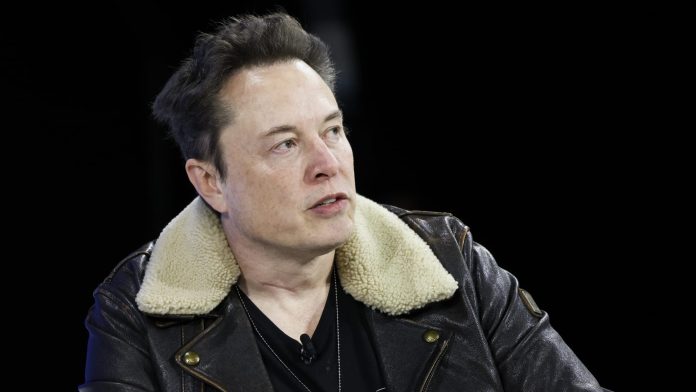[ad_1]
Tesla is recalling around 2 million of its vehicles in the U.S. to fix Autopilot features that auto safety regulators found to be confusing to drivers, or too easy for them to misuse and abuse. While Tesla did not concur with the agency’s analysis, according to the filings, the electric vehicle maker agreed to issue a voluntary recall and roll out an “over-the-air software remedy” to fix the problems.
In filings posted to the National Highway Traffic Safety Administration website Wednesday, the agency found that, in some circumstances when a feature called Autosteer is in use, “there may be an increased risk of a collision.”
Autosteer is a component of Tesla’s “Basic Autopilot” package that is intended for use on “controlled-access highways” and can provide “steering, braking and acceleration support” for drivers in certain conditions, the filings said. Drivers are supposed to keep their hands on the steering wheel and remain attentive while using Autosteer so that they take over the driving task whenever necessary.
The Autopilot system uses several controls to determine whether human drivers are still paying proper attention to the road and their vehicle when using Autosteer, but the NHTSA found that “the prominence and scope of the feature’s controls may not be sufficient to prevent driver misuse,” according to the report.
The recall will affect 2,031,220 of Tesla’s Model S, Model X, Model 3 and Model Y vehicles built since 2012, the filings said. Tesla’s “remedy,” a software update, began rolling out Tuesday and the NHTSA said remaining affected vehicles would receive updates “at a later date.” The over-the-air software update is free to Tesla customers.
The NHTSA opened an investigation into 11 incidents involving Tesla cars where Autopilot and Autosteer were involved in 2021, a probe which ultimately led to today’s voluntary recall. Tesla cooperated with the investigation and had “several meetings” with NHTSA representatives, the agency said.
Shares of Tesla dipped early Wednesday but rebounded in the afternoon to close higher by a percentage point at $239.29. (The market was broadly bullish after news that the Federal Reserve had decided to hold its key interest rate steady.)
For an Autopilot and Autosteer “remedy,” Tesla plans to roll out “additional controls and alerts,” to “further encourage the driver to adhere to their continuous driving responsibility whenever Autosteer is engaged” according to a Part 573 Recall Report it filed with the agency.
Those controls will include more prominent visual alerts on Tesla’s touch screens, “simplifying engagement and disengagement of Autosteer.” The update will also add “additional checks” for drivers using Autosteer, including while “outside controlled access highways and when approaching traffic controls.” Tesla’s filing with the NHTSA also says drivers can eventually get locked out of using Autosteer if they do not use it responsibly.
Philip Koopman, an automotive safety researcher and associate professor of computer engineering at Carnegie Mellon University, said in an email to CNBC, “The recall might help reduce misuse on unsuitable roads, which can help prevent some crashes.” He hopes Tesla and NHTSA will pay special attention to roads with cross traffic, because there have been multiple fatal crashes with trucks in that situation involving Tesla vehicles with Autopilot engaged.
However, Koopman said the voluntary recall was missing some elements that he believes would make a greater difference in terms of safety. For example, he said, there is no “definitive, measurable outcome promised,” Other manufacturers promise that their driver assistance systems will only be permitted to operate on approved roads, he pointed out.
Tesla also hasn’t committed to retrofit cameras into the company’s older EVs, which don’t have them, and hasn’t committed to retrofit night vision into their cars’ existing cameras. The in-cabin cameras in a Tesla serve as driver monitoring systems that detect whether a driver is behind the steering wheel with eyes on the road — but they aren’t robust enough to do that job safely, Koopman suggested.
Another automotive safety expert, Erik Vinkhuyzen, currently a visiting researcher at King’s College London, told CNBC that additional alarms prompting drivers to pay attention are “unlikely to help much.” He wrote to CNBC via direct message, “All efforts to force drivers to pay attention have proven insufficient and are belied by Tesla’s rhetoric that the software is almost autonomous and will be full self driving soon.”
The real remedy, he wrote, would be for Tesla to “Make people perform part of the driving task. If people need to steer, for instance, they must pay attention. The Autopilot system will still be helpful if it just does the accelerating and braking but people could not not pay attention.” When Autosteer lulls Tesla owners into believing they have a self-driving car, too often they will get distracted from the road, read emails or even fall asleep.
Tesla did not respond to a request for further information on Wednesday.
Don’t miss these stories from CNBC PRO:
[ad_2]
Source link



